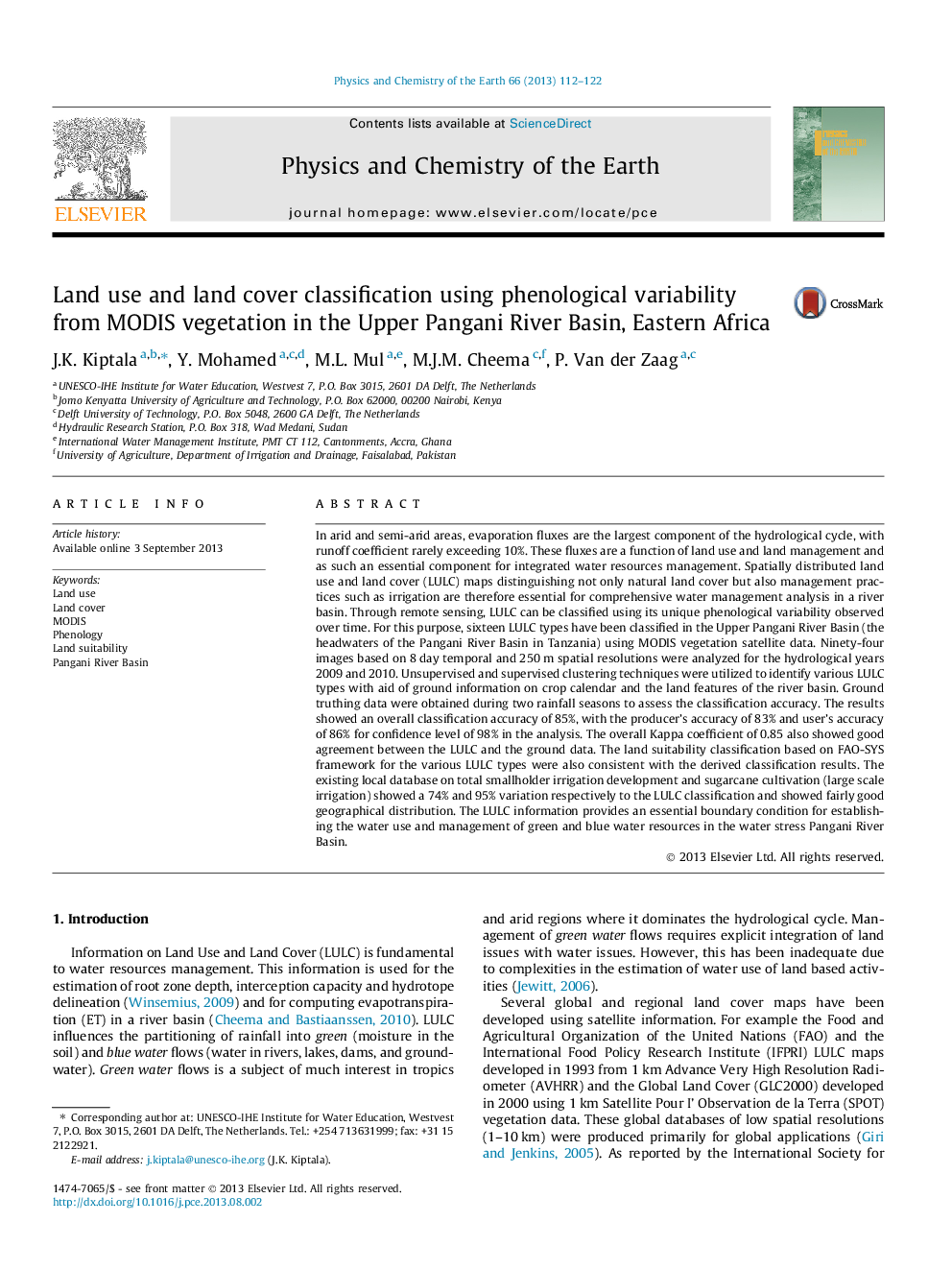| کد مقاله | کد نشریه | سال انتشار | مقاله انگلیسی | نسخه تمام متن |
|---|---|---|---|---|
| 4721032 | 1639357 | 2013 | 11 صفحه PDF | دانلود رایگان |

• LULC on moderate scale (250 m) classified from MODIS vegetation phenology.
• Satellite data covered two hydrological years in a bimodal tropical climate.
• 16 up-to-date LULC classes in considerably heterogeneous trans-boundary landscape.
• LULC captured both natural and managed land uses types with good accuracies.
• LULC consistent with the land suitability features and ground information.
In arid and semi-arid areas, evaporation fluxes are the largest component of the hydrological cycle, with runoff coefficient rarely exceeding 10%. These fluxes are a function of land use and land management and as such an essential component for integrated water resources management. Spatially distributed land use and land cover (LULC) maps distinguishing not only natural land cover but also management practices such as irrigation are therefore essential for comprehensive water management analysis in a river basin. Through remote sensing, LULC can be classified using its unique phenological variability observed over time. For this purpose, sixteen LULC types have been classified in the Upper Pangani River Basin (the headwaters of the Pangani River Basin in Tanzania) using MODIS vegetation satellite data. Ninety-four images based on 8 day temporal and 250 m spatial resolutions were analyzed for the hydrological years 2009 and 2010. Unsupervised and supervised clustering techniques were utilized to identify various LULC types with aid of ground information on crop calendar and the land features of the river basin. Ground truthing data were obtained during two rainfall seasons to assess the classification accuracy. The results showed an overall classification accuracy of 85%, with the producer’s accuracy of 83% and user’s accuracy of 86% for confidence level of 98% in the analysis. The overall Kappa coefficient of 0.85 also showed good agreement between the LULC and the ground data. The land suitability classification based on FAO-SYS framework for the various LULC types were also consistent with the derived classification results. The existing local database on total smallholder irrigation development and sugarcane cultivation (large scale irrigation) showed a 74% and 95% variation respectively to the LULC classification and showed fairly good geographical distribution. The LULC information provides an essential boundary condition for establishing the water use and management of green and blue water resources in the water stress Pangani River Basin.
Journal: Physics and Chemistry of the Earth, Parts A/B/C - Volume 66, 2013, Pages 112–122